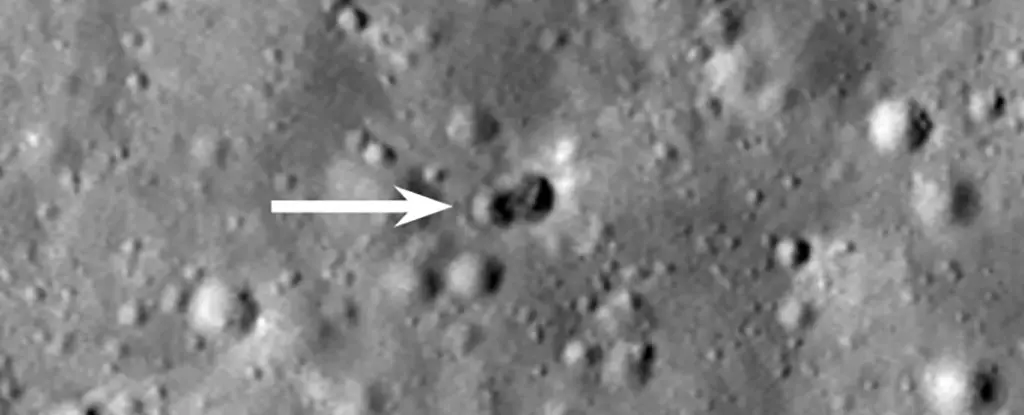The moon, our closest celestial neighbor, has long fascinated scientists and researchers. However, on March 4, 2022, an extraordinary event occurred that piqued the interest of astronomers and engineers alike. An object collided with the lunar surface, leaving behind not one but two craters. This incident led a team of researchers from the University of Arizona to embark on a mission to uncover the identity of the object and shed light on the cause of the dual impact. Through meticulous analysis and deductive reasoning, they have finally unraveled the mystery, attributing the collision to the Long March 3C rocket body abandoned during China’s 2014 Chang’e 5-T1 mission. In this article, we delve into the details of this fascinating discovery and explore the implications it holds for the future of space exploration.
Initially labeled as an unidentified object, the researchers successfully traced its origins back to the Catalina Sky Survey in March 2015. Speculation surrounded the object’s nature, with the possibility of it being a Space X booster raised. However, suspicions soon turned toward China’s 2014 mission. Through meticulous analysis of its movement and changes in reflected light, the team concluded that the object was, indeed, the Long March 3C rocket body.
What intrigued researchers even more than the object’s identity was the fact that it left behind two craters, an unprecedented occurrence. Aerospace engineer Tanner Campbell, part of the University of Arizona team, explains that the impact was almost perpendicular to the lunar surface. To create equally sized craters, two masses of similar size had to collide relatively far apart from each other. This revelation shed light on the role of an additional payload on the rocket, which had been unacknowledged by the China National Space Administration (CNSA).
The elusive nature of the additional payload continues to puzzle scientists. The CSNA has not disclosed any information regarding its purpose, leading to speculations about its composition. One possibility suggested by Campbell is that it may have been an extra support structure, additional instrumentation, or even something entirely unforeseen. Nevertheless, without a physical examination of the craters, the true nature of the payload may forever remain a mystery.
The incident serves as a stark reminder of the growing concern surrounding space debris. While the discarding of rocket bodies into space is a common practice, collisions with celestial bodies, such as the Moon, pose a potential threat. Satellites in orbit and even the International Space Station face the risk of severe damage. Although most debris disintegrates upon entering Earth’s atmosphere, there are instances where objects successfully traverse through and reach the surface. This incident highlights the urgent need for comprehensive tracking systems to monitor the ever-increasing number of objects deployed into space.
As humanity expands its presence in space, the importance of monitoring and understanding the trajectory of objects becomes paramount. Roberto Furfaro, a mechanical engineer at the University of Arizona, stresses the necessity of not only tracking these objects but also comprehending their actions upon arrival at their destination. With an increasing number of missions sending payloads to the Moon, it is crucial to have a robust system in place to anticipate and mitigate potential risks associated with space debris.
The discovery of the double craters on the lunar surface marks a significant milestone in our understanding of space debris and its impact. The successful identification of the object as the Long March 3C rocket body and the revelation of the hidden payload exemplify the power of scientific investigation. Nevertheless, the incident serves as a poignant reminder of the challenges that lie ahead as we continue to explore and exploit outer space. The need for effective tracking and monitoring mechanisms remains essential to ensure the safety and sustainability of humanity’s extraterrestrial ventures. By learning from these experiences, we lay the groundwork for a future where space debris is no longer a hindrance but rather a solved puzzle in the complex tapestry of our cosmic exploration.


Leave a Reply